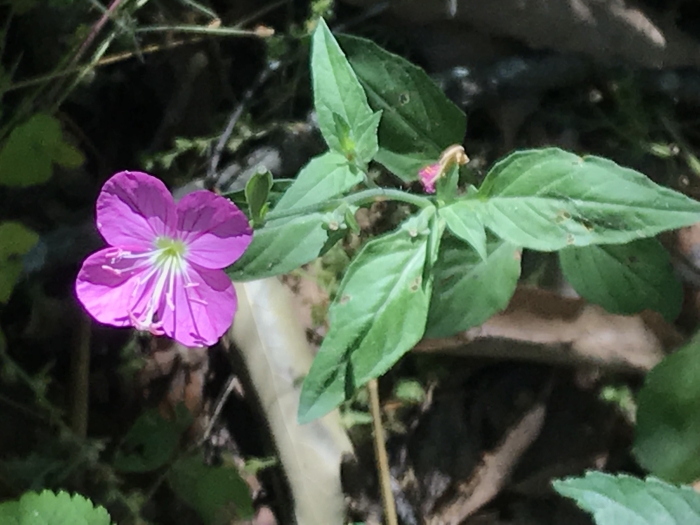Rose Evening Primrose
(Oenothera rosea)
Rose Evening Primrose (Oenothera rosea)
/
/

Adriana Nelly Correa Sandoval
CC BY 4.0
Image By:
Adriana Nelly Correa Sandoval
Recorded By:
Copyright:
CC BY 4.0
Copyright Notice:
Photo by: Adriana Nelly Correa Sandoval | License Type: CC BY 4.0 | License URL: http://creativecommons.org/licenses/by/4.0/ | Rights Holder: Adriana Nelly Correa Sandoval | Publisher: iNaturalist | Date Created: 2019-04-26T16:46:39Z |




















































Estimated Native Range
Summary
Oenothera rosea, commonly known as Rose Evening Primrose, is a semi-deciduous perennial herb native to grasslands and open, rocky areas in Mexico and parts of Central America. It typically grows to a height of 0.8 feet (0.2 meters) and can spread to about 2 feet (0.6 meters). The plant forms a low rosette of leaves and produces delicate cup-shaped flowers that are pink with a white center, blooming profusely in the spring and summer months. The flowers are particularly showy at dusk or on cloudy days, as they open in the evening and close by the next noon, hence the name "Evening Primrose".
Rose Evening Primrose is valued for its drought tolerance and the charming, long-lasting blooms that attract pollinators such as bees and butterflies. It is often used in rock gardens, borders, and as ground cover in xeriscaping due to its low water requirements. This plant thrives in full sun and prefers well-drained soils, although it can tolerate a range of soil types. While generally easy to maintain, it can self-seed prolifically and may become invasive in some conditions. Gardeners should be aware of its potential to spread but can enjoy its ease of care and the extended flowering period.CC BY-SA 4.0
Rose Evening Primrose is valued for its drought tolerance and the charming, long-lasting blooms that attract pollinators such as bees and butterflies. It is often used in rock gardens, borders, and as ground cover in xeriscaping due to its low water requirements. This plant thrives in full sun and prefers well-drained soils, although it can tolerate a range of soil types. While generally easy to maintain, it can self-seed prolifically and may become invasive in some conditions. Gardeners should be aware of its potential to spread but can enjoy its ease of care and the extended flowering period.CC BY-SA 4.0
Plant Description
- Plant Type: Herb
- Height: 0.8-2 feet
- Width: 1-1.5 feet
- Growth Rate: Moderate
- Flower Color: Pink, Purple
- Flowering Season: Spring, Summer
- Leaf Retention: Semi-Deciduous
Growth Requirements
- Sun: Full Sun
- Water: Low
- Drainage: Medium, Fast
Common Uses
Bank Stabilization, Bee Garden, Bird Garden, Butterfly Garden, Deer Resistant, Drought Tolerant, Fragrant, Groundcover, Hummingbird Garden, Low Maintenance, Rabbit Resistant
Natural Habitat
Native to grasslands and open, rocky areas in Mexico and parts of Central America
Other Names
Common Names: Rose Evening-Primrose, Rose Of Mexico, Rose Primrose, Pink Evening-Primrose, Rosy Evening-Primrose, Pink Nagblom, Cruz-De-Malta, Rose Eveningprimrose
Scientific Names: , Oenothera rosea, Xylopleurum roseum, Hartmannia rosea, Oenothera rubra, Oenothera virgata, Oenothera purpurea, Gaura epilobia, Oenothera rosea var. parvifolia, Godetia heucki
GBIF Accepted Name: Oenothera rosea Aiton